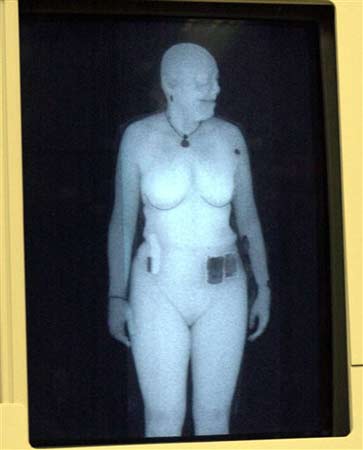New Airport X-rays Reveal Passengers' Bodies

PHOENIX (AP) -- Sky Harbor International Airport here will test a new federal screening system that takes X-rays of passenger's bodies to detect concealed explosives and other weapons.
The technology, called backscatter, has been around for several years but has not been widely used in the U.S. as an anti-terrorism tool because of privacy concerns.
The Transportation Security Administration said it has found a way to refine the machine's images so that the normally graphic pictures can be blurred in certain areas while still being effective in detecting bombs and other threats.
The agency is expected to provide more information about the technology later this month but said one machine will be up and running at Sky Harbor's Terminal 4 by Christmas.
The security agency's Web site indicates that the technology will be used initially as a secondary screening measure, meaning that only those passengers who first fail the standard screening process will be directed to the X-ray area.
Even then, passengers will have the option of choosing the backscatter or a traditional pat-down search.
A handful of other U.S. airports will have the X-rays machines in place by early 2007 as part of a nationwide pilot program, TSA officials said.
Sign up for the Live Science daily newsletter now
Get the world’s most fascinating discoveries delivered straight to your inbox.
The technology already is being used in prisons and by drug enforcement agents, and has been tested at London's Heathrow Airport.
The security agency says the machines will be effective in helping detect plastic or liquid explosives and other non-metallic weapons that can be missed by standard metal detectors.
Some say the high-resolution images -- which clearly depict the outline of the passenger's body, plus anything attached to it, such as jewelry -- are too invasive.
But the TSA said the X-rays will be set up so that the image can be viewed only by a security officer in a remote location. Other passengers, and even the agent at the checkpoint, will not have access to the picture.
In addition, the system will be configured so that the X-ray will be deleted as soon as the individual steps away from the machine. It will not be stored or available for printing or transmitting, agency spokesman Nico Melendez said.
- Shadowy T-rays: Hunting Tumors and Exploring the Universe
- Image: Future of X-Ray Imaging: Robotic Scanners Follow Your Movements
- Fingerprint Technology Gets High-Tech Upgrade
- Image: X-ray Beam










